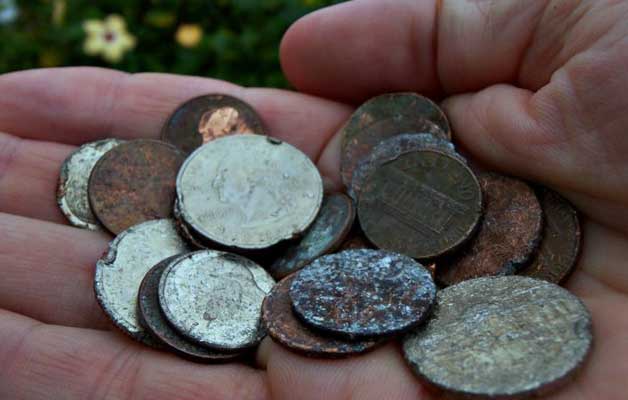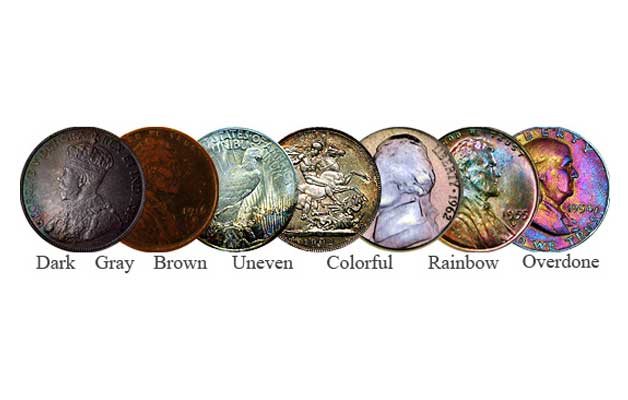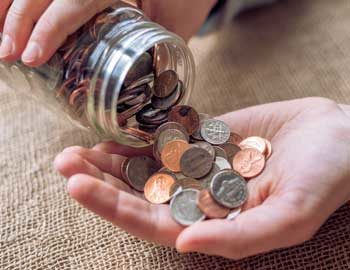Coins are not just pieces of metals used in exchange for goods and services they are a wonderfully useful tool in the archaeologist’s and historian’s toolbox as they instantly provide information for trade, economy, mythology, rulers, military, important events, etc. They are a very authentic source for building up and writing histories. The science that studies these coins is called as Numismatics and those who study or collect coins are called as Numismatists. Interestingly coin collection is one of the foremost celebrated hobbies in the world. And we are sure many of you too have a collection or aspire to start collecting. But are you still struggling with the numismatic terms like Proof? UNC? Reverse Proof? Do you get lost in all these technical numismatic terms? Worry not…We are here to help you with that. So today let’s familiarize ourselves with some basic Numismatic terminology.
Here is a glossary that will help you understand the terms and acronyms commonly used in the field of coin collecting.

- The Obverse: The obverse is the heads side or the front of the coin which is identified by the presence of the name of the ruler, country, state etc. or has the official emblem or coat of arms of the state, country, rulers.
- The Reverse: The reverse is the opposite side of the coin to the obverse. It is the tails side or back of the coin which generally depicts the face value of the coin (denomination) with a design and the year of issue.
- Legend: This refers to the inscription on the coin. It typically runs around the exterior periphery of the coin but there are exceptions.
- Edge– The area which borders a coin’s surface. Also referred to as coin’s “third side”. While some coins have a plain edge, some have serrated, milled, reeded or a notched edge. Most have anti-counterfeit features and unique designs on it.
- Field: The field is a flat undecorated area which sometimes contains mint or control marks, which are a sequence of letters or symbols indicating who produced the coins.
- Exergue: The exergue is a space at the bottom of the reverse which is often separated from the image by a line. Simply put it is the space beneath the main design on a coin or medals for an inscription. Sometimes this space houses part of the legend or a mint mark.
- Flan/ Planchet: Is the term used for the entire surface area of the coin. The entire disc of the metal on which a design is impressed to make a coin, metal or token.
- Mintmark: A symbol, usually a small letter, used to indicate at which mint a particular coin was struck.
- Rim– The raised portion of a coin encircling the obverse and reverse which protects the designs of the coin from wear.
- Die– A metal object used to impress a design into a planchet. Dies are usually engraved incuse so that the devices and inscriptions they produce will be in relief.
- Relief – Any part of a coin’s design that is raised above the coin’s surface.
- Incuse: As opposed to the relief, the design of a coin which has been impressed below the coin’s surface is called as incuse.
- Strike/Striking – Refers to the process by which a coin is minted. Also refers to the sharpness of design details. A sharp strike or strong strike is one with all of the details struck very sharply; a weak strike has the details lightly impressed at the time of coining.
- Commemorative– A coin issued to mark a special event or to honour an outstanding person.
- Definitive: Coins issued for general circulation and struck in large numbers.

Having seen the basics of numismatic terminology, let’s go further and discuss some advanced terms now:
- Uncirculated Coins (UNC): Every coin starts its life as an uncirculated coin when it is struck at the mint. However uncirculated “specimen” coins are issued specially for collectors. They are or may be better than ordinary coins (produced for circulation), but may still have some small imperfections.
- Proof Coins: Proof coins are the finest quality of coin produced by any mint. The term “proof” refers to the coin’s finish. Proof blanks are specially treated, polished, and cleaned to ensure high-quality strikes. These coins are struck at least twice at lower striking speeds, to give a higher and sharper definition and come with an official Certificate of Authenticity and are generally encased in a protective capsule.
The most common understanding of “proof” coin is that the flat background parts of the coin or the flan have a highly polished mirror finish, and the raised parts of the design have a matte finish or frost finish, giving a higher level of contrast between the two also known as the Cameo effect.
- Proof-like – Used to describe any uncirculated coin with a mirror-like reflective surface but lacking the full characteristics of a proof.
- Reverse Proof Coins: A reverse proof coin is struck exactly like a proof coin, but the field of the coin i.e. the flan of the coin is frosty and the raised devices are mirror-like. As these coins have an exactly opposite effect than that of the proof coins, they are called as “Reverse” proof coins.
- Bullion Coins: Bullion coins are generally bought for their intrinsic qualities and are kept as a store of value. Generally struck from precious metal like gold and silver these coins are kept as an investment. They have a similar standard of finish to circulating coins and their value depends on the current value of the metal they are struck in.
- Business strike– A coin intended for circulation in the channels of commerce (in contrast to a proof coin specifically struck for collectors).
- Fineness– Purity of the metal. Generally used in reference to precious metal coins like gold or silver.
- Grade– The condition or amount of wear and tear that a coin has received. Generally, the less wear a given coin has received, the more valuable it is. Coins are graded on the A.N.A. numerical system from ‘About Good’ at grade 3 to ‘Perfect Uncirculated’ at grade 70.
- Luster– The glossy appearance of the surface of a coin. Although normally brilliant, with time lustre may become dull, frosty, spotted or discoloured.
- Restrike: A coin struck from genuine dies at a date later than its original issue.
- Pattern: A prototype of a proposed coin design.
- Mule– A coin struck from obverse and reverse dies not originally intended to be used together.
- DDO/DDR – Doubled Die Obverse (DDO), an obverse die which exhibits doubled images in one or more places but in Double Die Reverse (DDR), the reverse die exhibits doubled images in one or more places.

Now let’s have a look at the terms that define the type of damage your coin has suffered.
- Abrasion: Light rubbing or scuffing marks that appear on coins from friction.
- Bag mark: A surface mark, usually in the form of a nick, acquired by a coin when it came into contact with other coins in a mint bag. Bag marks are most common on large and heavy silver and gold coins.
- Hairlines– A series of minute lines or scratches, usually visible in the field of a coin, sometimes caused by cleaning or polishing.
- Oxidation– The formulation of oxides or tarnish on the surface of a coin from exposure to air, dampness, industrial fumes, or other elements.
- Patina – A green or brown surface film found on ancient copper and bronze coins caused by oxidation over a long period of time.
- Scratch– A deep line or groove in a coin caused by contact with a sharp or rough object.
- Striations – Thin, light raised lines on the surface of a coin, caused by excessive polishing of the die.
- Toning – The process where the coin gathers a natural patina, the discolouration of a coin’s surface caused by the atmosphere over a long period of time is called toning. Toning is often very attractive, and many collectors prefer coins with this feature.
- Truncation – The sharply cut off bottom edge of a portrait.
- Verdigris: Verdigris (Patina) is the thin layer of chemical compound usually formed on the Copper coins. The silver coin gets oxidizes when they come in contact with the humidity and coin.

Now let’s see some auxiliary terms that are used in this field.
- Whizzing – The artificial treatment of a coin by wire brushing, acid dipping, or otherwise removing metal from the coin’s surface to give it the artificial appearance of being in a higher grade. Whizzing is an alteration, not a grade or condition.
- Dipping– The act of removing tarnish, surface dirt, or changing the colouration of a coin by applying chemicals, or otherwise artificially treating it with liquids.
- Annealing– The heating and cooling process by which planchets are softened to allow the metal to flow more smoothly during the strike.
- Cleaning– Refers to the process of removing dirt or otherwise altering the appearance of a coin to make it better. Here are some cleaning tips from experts.
- Electrotype– A counterfeit coin made by the electroplating process.
Collecting coins is an engaging hobby and one can learn a lot from it. We hope that this glossary will help you in your journey of collecting coins. Now next time you meet your collector friends you won’t feel left out and can easily join in the discussions and show off your numismatic knowledge by using this cool and very pro numismatic terminology!
To read interesting fun facts about numismatics click here and here.
Happy Collecting fellas!
The Mintage World Team comprises of experts, researchers and writers from the field of Philately, Notaphily and Numismatics who try to shed light on some of the most interesting aspects of coins, banknotes and stamps from not just India but across the globe as well.

